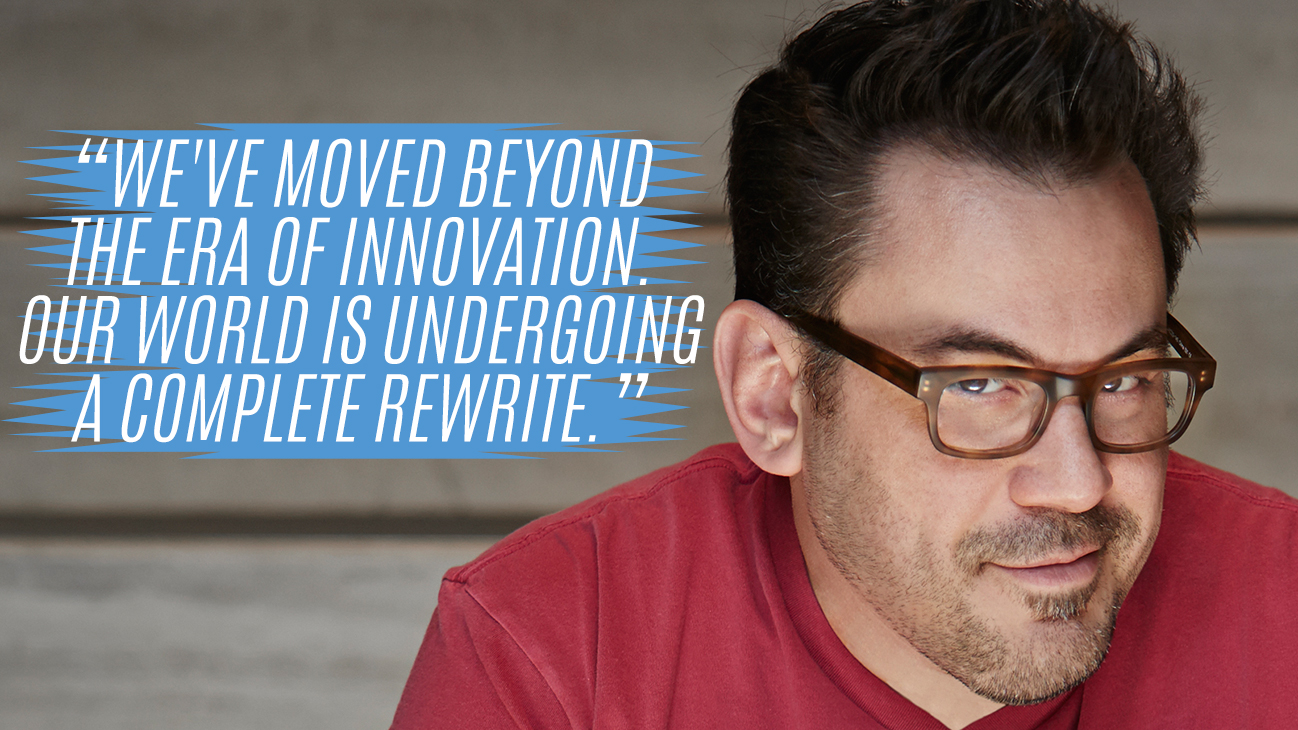Scan the business news and it can seem like the way almost everything works is being rewritten: how we interact, how we buy and sell, how we make things, how we get from place to place.
On the web, anyone can be a global content creator, merchandiser, manufacturer, opinion influencer. Power is dispersing. Markets are being blown to bits. Age-old institutions—from business to politics to religion—are experiencing unprecedented pressure to stay relevant.
On public roads, autonomous vehicles—computerized cars and trucks with no drivers—are a reality and soon may be transporting cargo and people. They will be powered by new kinds of portable energy, as the planet moves away from carbon-based fuels toward more renewable technologies.
The way we make things is in the midst of complete upheaval. New processes and materials are even redefining what we think of as manufacturing. In Seattle, a startup named Modumetal has pioneered an atom-by-atom way to build stronger metals, skipping the traditional process of melting ore to “grow” alloys stronger than steel. Scientists elsewhere are working on “smart” concrete that can repair itself.
The rise of 3D printing is transforming the basic concept of manufacturing, flipping it from a subtractive process (cutting raw materials down into parts or molds) into an additive process, “printing” whatever shapes we want from scratch. This enables vastly quicker production times and mass customization of products for customers. It also enables the creation of all-new composites with unprecedented properties, mixed on demand in a computer. The 3D printing pioneer Stratasys calls it “the age of digital materials.”
The domain of science fiction is becoming reality, forcing us to examine the implications. In San Diego, a company called Organovo is using 3D printing technology to create human tissue for medical research. The company eventually plans to provide “tissue on demand” to surgeons. Elsewhere in laboratories, scientists have tools for editing genomes, and the promising and terrifying potential to alter or eliminate entire species.
We are amid the largest era of institutional change in the history of our planet. We’re calling it “the Great Rewrite.” In a series of reports, here and in Forbes magazine, we will explore the profound forces at work in business and beyond. The Great Rewrite is a phenomenon that goes beyond conventional definitions of disruption and innovation. More than incremental growth or transformative business models, it frames global advancements leading to mass business opportunities and societal benefits. The changes coming via this rewrite won’t be confined to disrupting individual products or markets. They will ripple across industries and institutions, fundamentally altering the way our species lives. They will build new industries, force the hand of markets and set us on a path of deep upheaval to the status quo.
Modumetal is rewriting time-tested processes for creating metal. Physicist Christina Lomasney, the company’s CEO and cofounder, compares the company’s new-style alloys to plywood. They are “grown,” using layers of metal atoms, aligned in ways that can give a finished metal properties like extra strength or corrosion resistance. Existing metals and even plastics can be coated using the same process.
The process involves modulating electric current through raw materials—hence the company name. There’s none of the fire and brimstone of the steel mill. It’s so advanced that industry isn’t completely ready for it. Standards that metals must meet to be used in industrial jobs often require that older processes be used.
“The challenge with changing the world is that there is an old way of doing things,” Lomasney says.
Stratasys founder Scott Crump didn’t know his pioneering 3D printing invention would alter the act of creation, rewriting the way things are made. His former company created electronics products – and a futuristic dream. After designing a product with CAD software, he wondered why there wasn’t a way to press a button to output a prototype, the way he could print a document from a word processor. Crump invented fused-deposition modeling, or FDM—nozzles depositing layers of material in three dimensions from a computer design.
“One of the things that I retaught myself as an inventor is that you have to break the rules, or the status quo, of what currently defines reality,” Crump says. “You have to operate sort of uncomfortably different.”
FDM now is used to create more than just prototypes. Surgeons are working with precise 3D, color models of patients’ internal organs, created directly from CT scans, to preplan surgical strategies. In Japan, automaker Daihatsu will later this year begin allowing buyers of its Copen roadster to go online to select body textures and colors for new cars in almost infinite variety. The plastic body detailing will be custom-printed by Stratasys printers for each vehicle individually on the factory floor.
If Daihatsu, Japan’s oldest carmaker, can rewrite its base unit of automotive creation, other traditional companies can, and must do the same. In coming months, our reports will explore more rewrites in manufacturing, energy, healthcare and other sectors. Our goal in presenting examples like these is to try to put a framework around what is happening, to provide a north star. Our aim is to offer guidance for not just understanding this Great Rewrite that is reshaping the planet, but establishing a footprint in it and working on a path to execute in its wake.

